
Annual Forbs Around Las Vegas, Vegetation Around Las Vegas
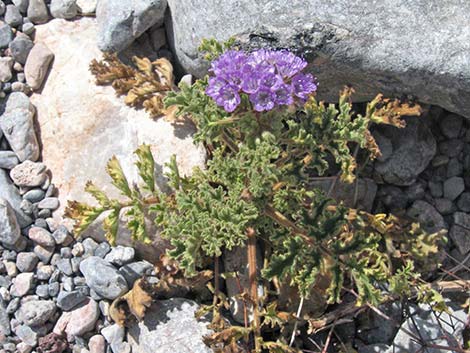 Species blooms late: opening flowers after the leaves start to dry out |
General: Pedicellate Phacelia (Phacelia pedicellata) is a large annual forb with very sticky, deeply notched or dissected leaves. The inflorescence is coiled with many small, bell-shaped, purple flowers (white throats) that all grow from the same side of the flower stalk. In contrast to other species of phacelia, this species seems to put all of its energy into growing large leaves, and only starts to flower after the leaves begin to dry out. Pedicellate Phacelia is an uncommon component of desert vegetation communities during the spring. It can be found in washes at lower to middle elevations in the Lower Sonoran (Creosote-Bursage Flats) and Upper Sonoran (Mojave Desert Scrub) life zones. Look for this species in Furnace Creek wash just east of the Death Valley National Park boundary. Note: secretions on leaves and stems of phacelias can cause a rash similar to poison oak or poison ivy. Family: Waterleaf (Hydrophyllaceae). |
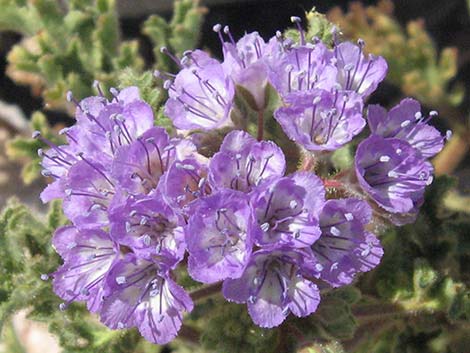 The flowers appear as a mass -- not as a typical phacelia inflorescence (see for example, Notch-leaf Phacelia) |
Other Names: Plant Form: Upright, spreading forb. Height: To about 2 feet. Stems: Erect with few branched, hairy, glandular (extremely sticky). Leaves: Basal and on the stems. Leaves oval; lower leaves compound, upper leaves lobed. Leaves glandular and extremely sticky. Flowers: Blooms during spring, later than other species of phacelia. The inflorescence is an open cyme with many small flowers growing on the same side of the flower stalks with several sets of coiled buds. Each set has two rows of paired buds, creating a mass of flowers that does not look like a typical phacelia inflorescence when they open (see for example, Notch-leaf Phacelia). Flowers small, bell-shaped, purple with white throats. |
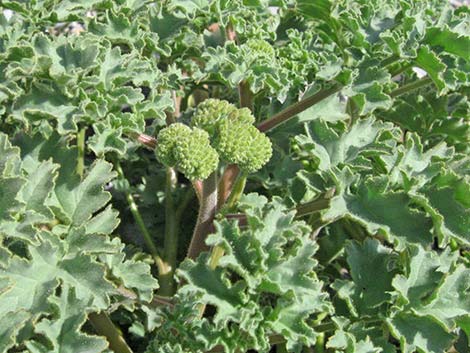 Flower buds look like a broccoli stem. |
Seeds: Habitat: Dry, well-drained sandy and gravelly soils in washes and canyons. Elevation: To about 5,000 feet. Distribution: California, southern Nevada, Arizona, and south into Baja California. Comments: |
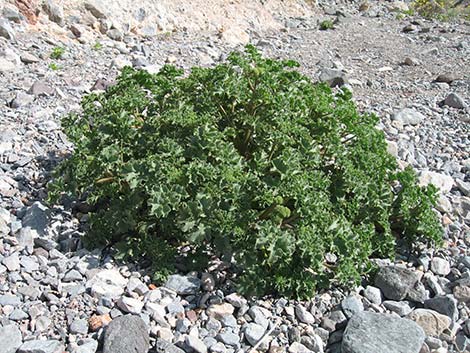 This plant is almost 3-feet across. |
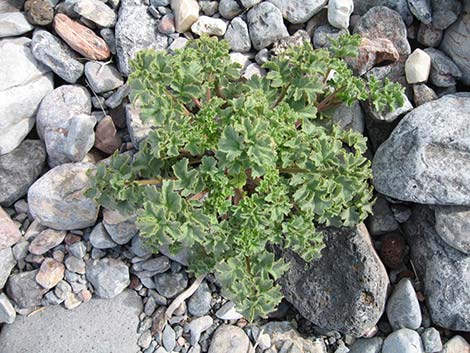 Small plant |
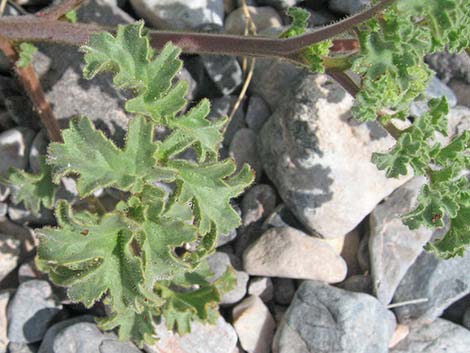 Lower leaves are openly dissected (compound) |
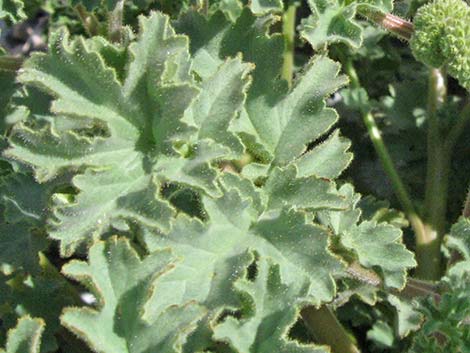 Upper leaves are lobed and appear folded and crinkled |
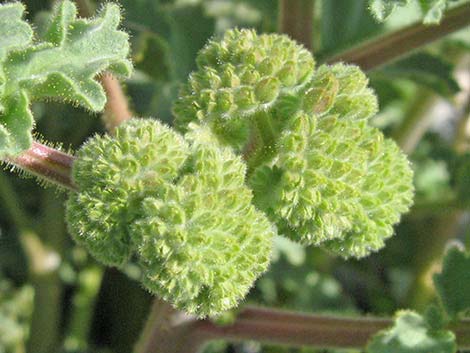 |
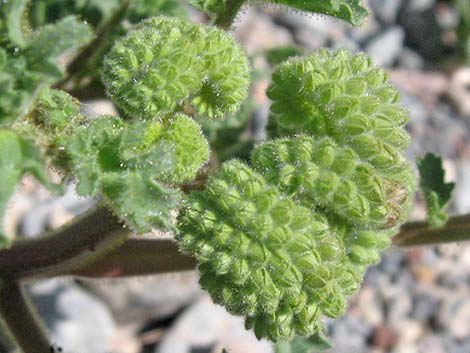 |
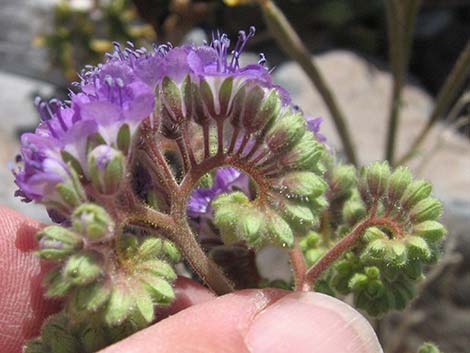 Flowers on one side of the stalk |
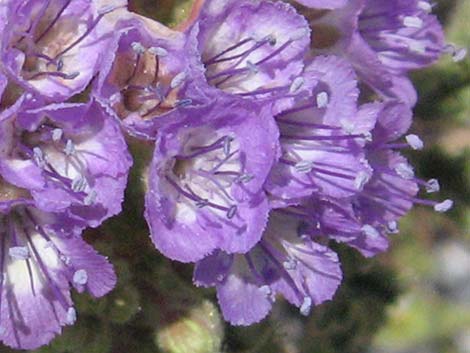 Bell-shaped flowers are purple with white throats |
Note: All distances, elevations, and other facts are approximate. Names generally follow the USDA database.
![]() ; Last updated 211224
; Last updated 211224
| All Annual Forbs | Plant Species Index | Glossary | Copyright, Conditions, Disclaimer | Home |